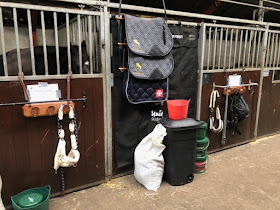We have a volunteer engineer apprentice on board. She is doing her initial training and is doing a great job. We talked a bit about making stuff one day where she was knitting a sweater. I told her a bit about what I had made earlier of woodworking, and she told me that one of her oldest friends were going to get married - and that she would like to make something for her as a wedding gift.
After discussing the various possibilities and showing her examples from my blog she set her mind on something like the small hanging cabinet with drawers which I made 9 years ago.
As per usual, we started off finding a decent pallet frame so we had some wood to make the cabinet out of. Since we are in drydock at the moment, and due to the nature of our ship, we have a lot of the carpenters machines ready set up in a warehouse on the yard. So stock preparation was much easier than it used to be. We have a small Makita planer that could trim the boards to the desired thickness in very little time. The table saw is out of service at the moment due to someone sawing into a hidden screw and activating the Sawstop. So for the ripping of boards we had to use the band saw.
Klara is new to woodworking, so I decided that a rabbeted construction would be the best bet, also given that we need to complete the cabinet before the wedding.
For some reason we don't have a router plane, so for the dado for the shelf, I had to make a small router plane out of a block of wood and a sharpened screw. That worked OK.
There is a Lie Nielsen rabbet block plane on board that we used for the rabbets. I like my Veritas skewed rabbet plane better, or the old combination plane that I have in my ocean going tool set. I didn't bring this set with me, so we had to rely on what we could find on board.
The case was assembled using some headless brads and glue. We had glued up a back panel which was reduced in thickness to 1 cm (3/8"). The back panel was attached in a rabbet with a dab of glue in the center and some more headless brads. The idea is that the back can then move a bit with the seasons without splitting.
I demanded that the face frame was built traditionally with mortise and tenons and rails and stiles. No mitered corners and quick solutions. Klara really liked the look of the face frame on one of my other old cabinets, where there is a small moulding on the inner part of the frame. In order to make something like that, we found an old moulding plane that someone has once donated to the ship, and it was still sharp enough to work.
So far we have made one corner of the face frame, but today we are going to see of we can complete it and glue it onto the case.























































